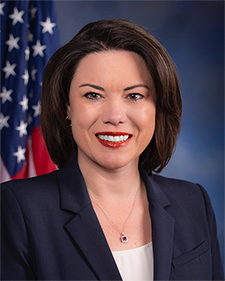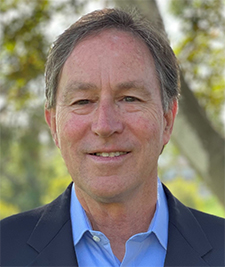WASHINGTON – Republican Cicely Davis, a political neophyte considered a long shot to win her race, has raised almost $2 million in her bid to unseat Rep. Ilhan Omar, the latest filings with the Federal Elections Commission show.

“Omar is someone who many Republicans can’t stand, and that’s reflected in this fundraising total,” said Kyle Kondik of the University of Virginia Center for Politics. “You can see this in other races across the country – like in Georgia, where Marjorie Taylor Greene’s Democratic opponent has also raised a ton of money in a district that just functionally is not winnable for a Democrat.”
Kondik also said, “House races are very much nationalized, both in terms of how the results often reflect a district’s presidential partisanship and also how donors from all over the country focus on certain races.”
“The national parties highlight winnable races to try to direct donors to the races and candidates where they can make a difference, but donors also get wrapped up in defeating controversial members on the other side, even if those members hold districts in which general elections are not competitive, as is the case with Omar, Greene, and others.” Kondik said.
In her most recent race for re-election, Omar was challenged by Republican Lacy Johnson, who raised more than twice as much campaign cash as Omar – $12 million to the lawmaker’s $5.7 million. Yet Omar won re-election with more than 64 percent of the vote, compared with Johnson’s 26 percent.
“One of the side effects of increased money in politics in the United States coupled with the lack of competitive races in the House is that money can be sent easily to candidates who have no chance of winning,” said Tim Lindberg, assistant professor of political science at the University of Minnesota-Morris.
According to a MinnPost analysis of candidate campaign reports for the second quarter of the year, Davis raised nearly $187,000 last quarter in itemized, individual donations (typically larger than $200). About 77 percent of these donations came from out-of -state.
But most of the money Davis raised in the second quarter – nearly $525,000 – came from smaller, nonitemized donations. And although Omar and Davis are legions apart when it comes to political ideology, they both have raised a lot of campaign cash outside of Minnesota.
Omar received about 92 percent of the nearly $252,000 in second quarter itemized donations from out-of-state donors. She also received about $88,000 in nonitemized donations.
Omar campaign spokesman Jeremy Slavin said the lawmaker is “proud to run a campaign powered by small-dollar, grassroots donors that does not take any corporate or PAC (political action committee) money.”

However, before Omar can face Republican opponent Davis, she must win the Democratic primary election on Aug. 9, in which she is challenged by former Minneapolis City Council member Don Samuels.
Samuels outraised Omar in fundraising in the second quarter, attracting about $594,000 to Omar’s $380,000. Samuels also ended the quarter with more money in his campaign account ($530,000,) than Omar ($460,000) and Davis ($228,000.) Unlike his rivals, Samuels received about 80% of his itemized donations from Minnesota residents.
Ettinger makes big loan to his campaign
While the 5th District race is attracting a lot of campaign cash, it isn’t the only expensive congressional race in Minnesota. In the 2nd District, Rep. Angie Craig (D) is fending off a serious challenge from Republican Tyler Kistner. Craig raised more than $1.1 million in the quarter, while Kistner raised less than half of that, about $491,000.

“In the 2nd District it’s no surprise that money is pouring in from out-of-state,” said Lindberg. “This is one of the few House seats Republicans could pick up in November, so ensuring that the Republican candidate, Kistner, has an adequate cash supply is key to winning the district, especially given the large size of money that Craig started with.”

Meanwhile, the special election to fill former Rep. Jim Hagedorn’s 1st District seat is also attracting a lot of campaign money. Hagedorn died in February and Republican Brad Finstad and Democrat Jeff Ettinger are competing to fill the remainder of Hagedorn’s term in a special election that will be held on primary day, Aug. 9.

Meanwhile, Finstad has raised about $610,000, a considerable amount given the short campaign period of the special election.
FEC data shows congressional campaigns are becoming more expensive each cycle. In the first 15 months of this cycle, congressional candidates raised about $1.8 billion. In the first 15 months of the 2020 cycle, candidates raised about $1.4 billion. In 2018, that figure was $1.2 billion. And 10 years ago, in 2012, it was $884 million.

He said the transfer of money “between political organizations or campaigns to be used for whatever purpose it is deemed most useful for,” is a concern.
“It is harder than ever to figure out where the money came from, even if we know where it is spent,” Lindberg said.


0 Commentaires